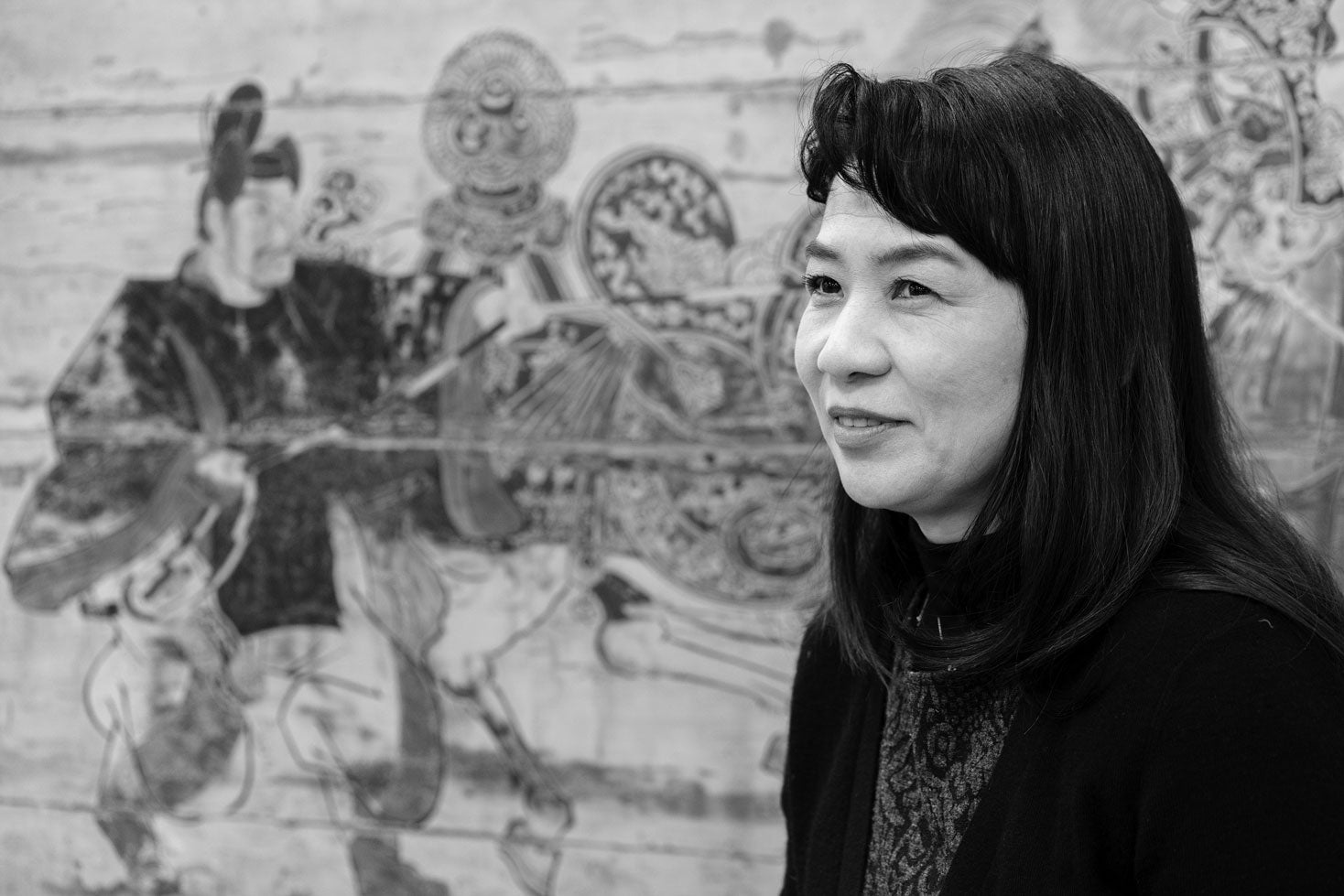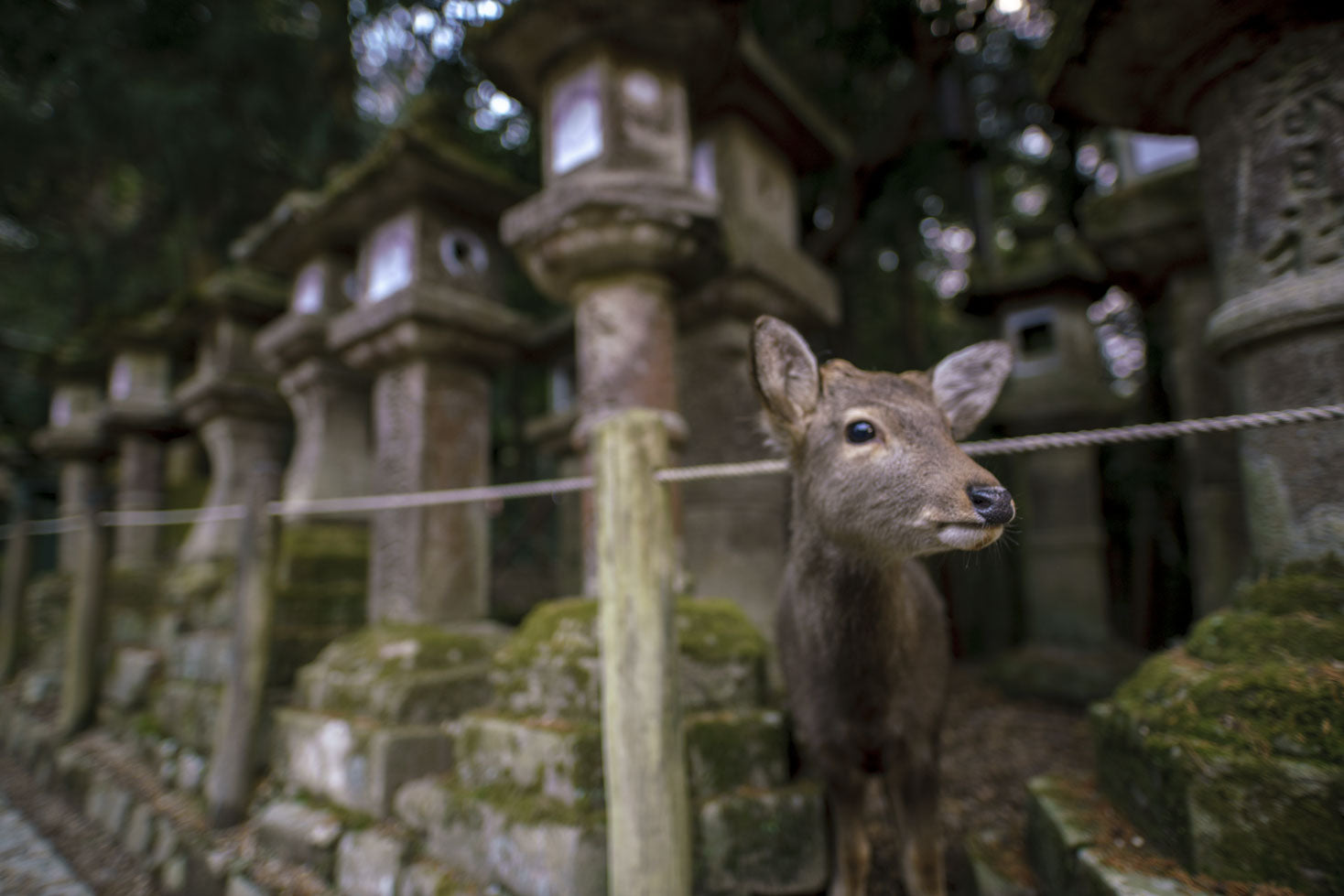MASTER OF CRAFT
FORGED FROM THE PAST
NARA, JAPAN
Scroll to explore
The Story
IN CONVERSATION WITH IKUYO YANAGISAWA
PRESIDENT OF THE KIKUICHI KNIFE COMPANY IN NARA, JAPAN
Ikuyo Yanagisawa is the fourth generation owner of The Kikuichi Company, an expert knifemaker, born into a seven hundred fifty year-old tradition of sword making. Yanagisawa is continuing in her family’s history of master crafted knives with a sharp focus on ensuring the highest quality of handmade craftsmanship remains their differentiator in the ever expanding global knife making market.

I see myself as
IKUYO YANAGISAWA, PRESIDENT OF KIKUICHI
someone who is filling the void, so I
think that the most important goal is
to keep up the tradition and the
quality of our products.
S+O — what is the CONNECTION between nara and THE HISTORY OF JAPANESE KNIFE-MAKING?
Yanagisawa — Nara is considering to be the birthplace of katana forging. I think that the reason that katana forging began in this area is because of the Buddhist temples and shrines like Tōdai-ji and Kasuga-taisha. This was about seven hundred and fifty years ago. This area required a lot of protection in order to keep these temples safe. This was the job of the Samurai and their katana swords. The oldest katana from the Kamakura period is a Kikuichi sword. It is now a national treasure.

S+O — what prompted the change from sword-making to culinary knives?
Yanagisawa — In 1868, the Meiji Restoration happened. During this time, laws were enacted that prohibited Samurai from holding and carrying swords. Within the Kikuichi history, this era was the dark ages when we lost all of our clientele. Then the Samurai disappeared altogether. We had to choose between either continuing to make katana swords as artwork or adopting a new business strategy. This is when we made the decision to make culinary knives.
S+O — what is the significance of the sakai artisans?
Yanagisawa — Sakai is a town about an hour away from Nara. It is the birthplace of katana forging. Each of these local artisans learned their skills from their fathers. The blacksmith learned from another blacksmith, the sharpener learned from another sharpener, so on and so forth. They have protected the craft of making knives by continuing to embrace traditional themes. They do not compromise any steps of the process. They are an integral part of the Japanese knife-making culture, and other countries' technology or techniques cannot compare to ours.


S+O — how does this represent THE japaneSe artisan culture in general?
Yanagisawa — I believe that the Japanese trade culture, where an apprentice learns from a master, is one of a kind. This unique relationship doesn't really exist elsewhere anymore. It is a method that deploys teaching which is deeply embedded in all our relationships today.
S+O — how many artisans are involved in the process of making a singular knife?
Yanagisawa —Each knife is generally made by four different craftsmen. The first one is the blacksmith. There are sixteen steps to making a knife, and the first eight are done by the blacksmith. After that, there's a process where the three different blades need to be assembled together by the sharpener in a series of six additional steps. And then the handles are made, before all of the components are brought together.


S+O — how long have you been at the helm of kikuichi?
Yanagisawa —Taking into account Kikuichi's seven hundred and fifty year history, my time is really, really short. I’ve been in charge for two and a half years. My father ran this company for fifty years. I see myself as someone who's filling the void, so I think that the most important goal is to keep up the tradition and the quality of our products.
S+O — what do you see for the future of kikuichi?
Yanagisawa —I think that the weight of seven hundred and fifty years can get really exhausting. I try not to think about the history too much, and come to terms with it and myself, when I'm looking towards the future and what's coming next. When a business is around for so long, it has to adapt. I think that our business has changed a lot over time, but without sacrificing the product quality and tradition. I believe that this is the key of our success, being able to withstand the trials of time.
S+O — why should someone invest in a kikuichi knife?
Yanagisawa —Of course, the quality of the product comes to mind first. We use the best materials that are hand-crafted by people who have mastered this artistry. But there is also a reputation and reliability factor that exists in our products because we have been around for so many years. When a customer chooses one of our knives, if anything should happen to that knife say, ten or fifteen years down the road, we will definitely be around to fix it.

Credits
Photography by Brian Sokol
Film by Oresti Tsonopoulos
Special Acknowledgments - Shinichi Kinoshita of Fixers Japan
The Objects
Exclusive Edition 017 Japanese Santoku Culinary Knife
The Santoku knife is an all-purpose knife made for slicing, dicing, and mincing. The knife is forged from blue carbon steel, and crafted by Sakai artisans associated with the seven hundred fifty year-old knife company, Kikuichi. The handle is constructed from ho wood and water buffalo horn in an ergonomic design that perfectly balances high aesthetic value with function.
The Destination
NARA, JAPAN
Nara was the first imperial capital of Japan established in the eighth century. Often overlooked for nearby Kyoto, the beauty of Nara, its impressive shrines, collectively designated as a UNESCO World Heritage Site, along with its over-friendly deer make for an unforgettable day trip to a quieter chapter of Japan’s history.



